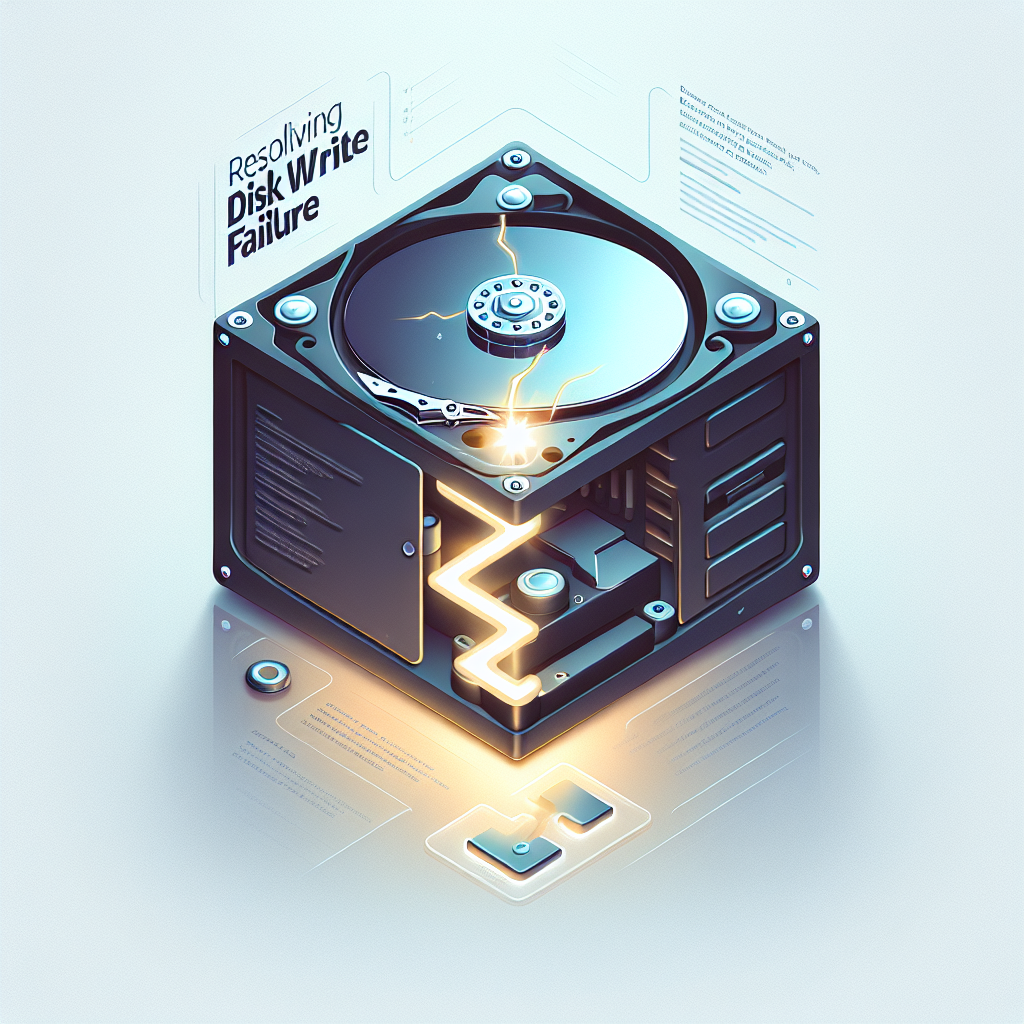Physical Address
304 North Cardinal St.
Dorchester Center, MA 02124

As a technology enthusiast and a professional in the field, encountering a Disk Write Failure can be both alarming and frustrating. This challenge once appeared during a routine data backup on my workstation, triggering a cascade of thoughts regarding data integrity and system reliability. In this blog post, I’ll share my journey navigating through this issue, detailing the steps I took to resolve it and providing a comprehensive guide for others who may face similar difficulties.
A Disk Write Failure occurs when your operating system is unable to write data to a disk or storage device. This issue can arise from various underlying problems and often presents as error messages during system operations. Common symptoms include:
Identifying the root cause is crucial for effective resolution. Some common causes include:
After identifying the problem, I followed a systematic approach to troubleshoot and resolve the Disk Write Failure.
First, I verified that there was adequate disk space available. To do this:
I next employed the built-in Disk Check Utility to identify and repair file system errors. Here’s how:
chkdsk C: /f /r (replace C: with the relevant drive letter).
Ensuring all drivers are up to date is a critical aspect of maintaining system integrity. I took the following steps:
To rule out any possibility of malware interference, I executed a full system scan using a reliable antivirus program. This step is essential to ensure that the write failure is not caused by malicious software.
If the problem persists, I conducted a physical inspection of hardware:
Before proceeding with any extensive troubleshooting, I made sure to back up important data to prevent any potential loss during repairs.
If the disk write failure persists, consider the following:
My experience with resolving a Disk Write Failure reinforced the importance of regular maintenance and vigilance regarding system health. By identifying possible causes, systematically troubleshooting, and executing preventive measures, I successfully restored the functionality of my workstation. Should you encounter a similar problem, follow these guidelines, and you may find yourself swiftly back on track.
If you have exhausted all troubleshooting methods, consider consulting a professional service for data recovery or hardware repair.
Yes, outdated drivers can lead to various hardware issues, including disk write failures.
No, ignoring such messages can lead to data loss and further complications in system operations.
For more detailed guidance on computer vulnerabilities, check out related posts on my blog.